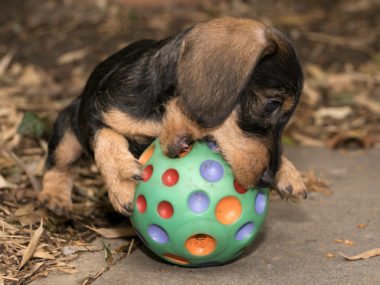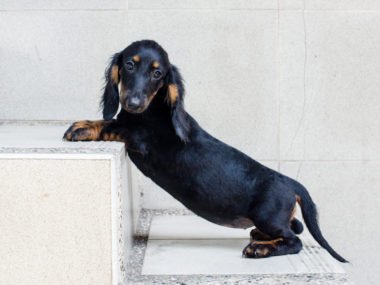Are you worried your dachshund has has hurt his back? Or are you concerned he may have Intervertebral Disc Disease? Maybe you just want to know what signs to look out for? Don’t worry – we’re going to answer all your questions about looking after your dachshund’s back and treating back injuries.
How do you care for a dachshund’s back? Here’s how:
- Keep your dachshund at a healthy weight
- Always support his back when you pick him up
- Discourage him from running upstairs or jumping onto things
- Give him the right amount of exercise every day
- Learn how to spot signs of back pain
- Know what to do in an emergency
- Have pet insurance to cover you for expensive back surgery
If you’re worried your dachshund’s injured his back or just want to know more about Intervertebral Disc Disease (IVDD), read on to find out why dachshunds suffer with their backs, warning signs your sausage dog is in pain, what to do in an emergency, whether dachshunds can recover from back injuries, how much surgery costs and how best to minimise the risk of your dachshund getting IVDD.
IMPORTANT: I am NOT a Vet and this is NOT specialist advice. This article is a guide based on research and personal experience. Every dachshund is different and treatment for back problems and IVDD will also be different depending on your individual dog’s situation. If you have ANY concerns about your dachshund’s health, speak to your vet for professional advice.
Table of Contents
- What is IVDD?
- Why do dachshunds get IVDD?
- What age do dachshunds get IVDD?
- What are the symptoms of IVDD in dachshunds?
- What do I do in an IVDD emergency?
- How do I prepare for an IVDD emergency?
- Can dachshunds recover from IVDD?
- When should I do IVDD surgery?
- Can IVDD recur?
- What do I do if my dachshund is paralysed by IVDD?
- What is the cost of IVDD surgery?
- Who should perform IVDD surgery?
- Can you prevent IVDD in dachshunds?
- Does neutering a dachshund increase the risk of IVDD?
What is IVDD?
IVDD (Intervertebral Disc Disease) is when a disc between the vertebrate in your dachshund’s spinal column deteriorates and calcifies making it vulnerable to bursting with any jolting and jarring movements (things like going up and down stairs or jumping on or off the bed or sofa).
And it’s not just dachshunds that are predisposed to this painful and challenging condition; beagles, bulldogs, corgis, and shih tzus are also at risk.
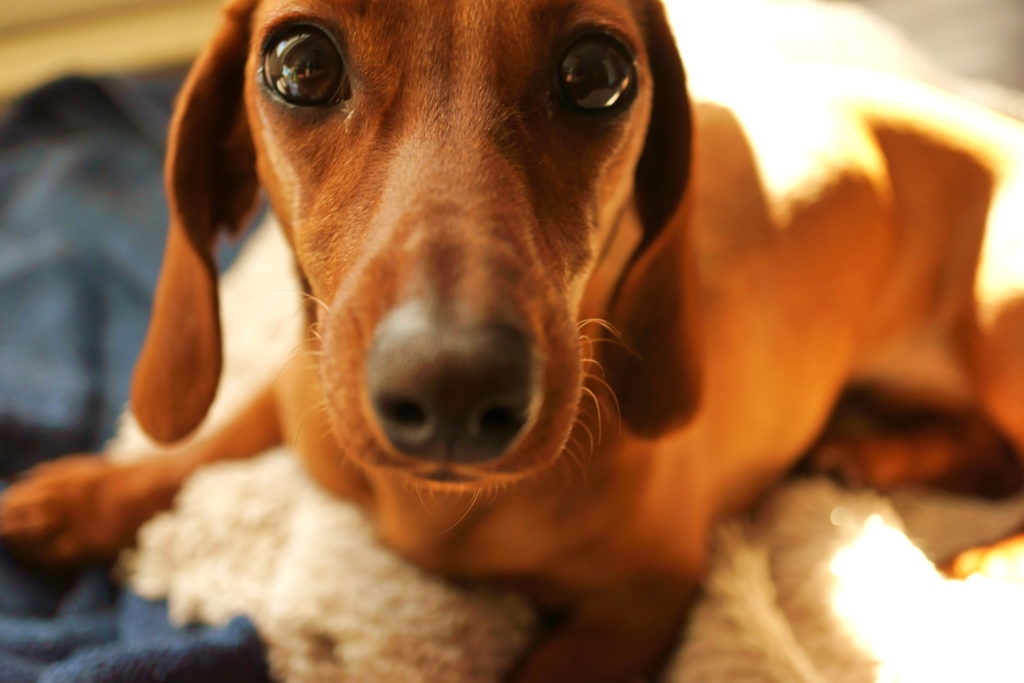
Why do dachshunds get IVDD?
Dachshunds are bred to have a dwarfism trait, or chondrodysplasia, which gives them their characteristically short legs. This genetic mutation also causes their spinal discs to start deteriorating at a younger age than other breeds with normal length legs.
This natural weakness in their long backs means dachshunds are prone to back injuries or conditions like Intervertebral disc disease (IVDD). They can hurt their backs by being held in the wrong way or doing something as simple as running up or down steps.
What age do dachshunds get IVDD?
In general, dachshunds are more at risk of Intervertebral Disc Disease (IVDD) between ages 3 and 7 when they’re young and playful. But it can happen at any age so take precautions and don’t let your dachshund go up or down stairs or jump up or down from the bed or sofa.
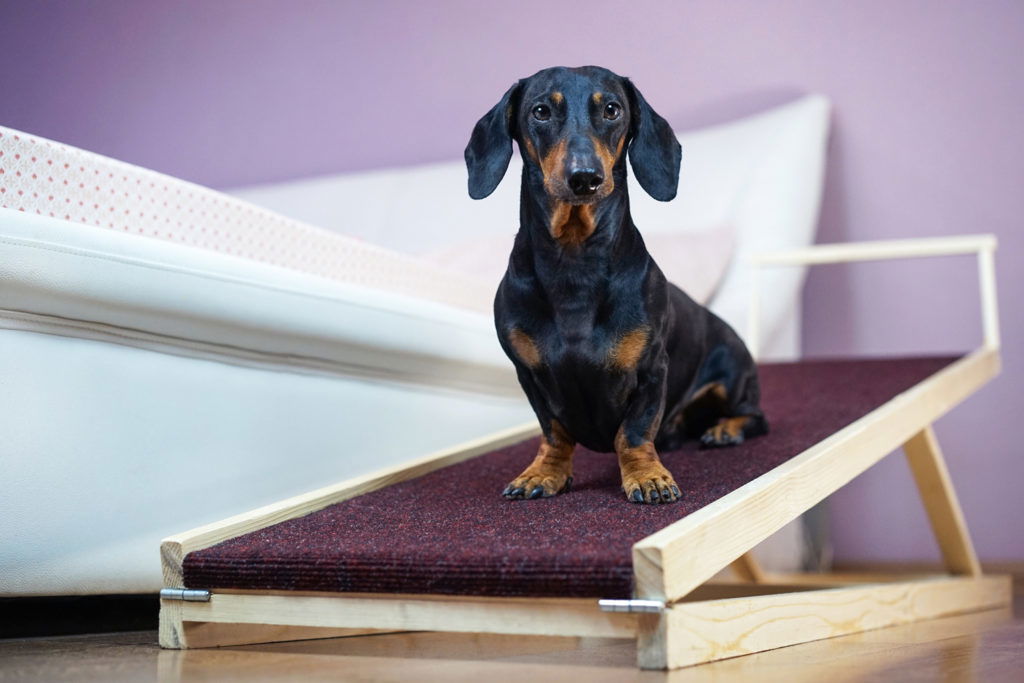
Use baby gates to secure the stairs in your home, and position ramps to help your dachshund get on and off the bed or sofa (if you’re happy to have him up there with you!). Do as much as you can to prevent him making any jolting, jarring or repetitive movements that could potentially harm his back.
What are the symptoms of IVDD in dachshunds?
These are the signs your dachshund has hurt his back:
- Your dachshund cries or flinches when you touch him
- He’s walking funny
- He’s stopped jumping on the sofa or going up stairs
- His back is arched and tense
- He’s unusually quiet
- He refuses to move, and his head is lowered
- He won’t eat or drink
- He’s struggling to stand
- His legs are shaking
- He’s lost bladder control
In really severe cases, your dachshund won’t be able to stand up at all or his back legs will be lame and he’ll pull himself along by his front legs. He may also wee or poo around the house, or have trouble going to the toilet.
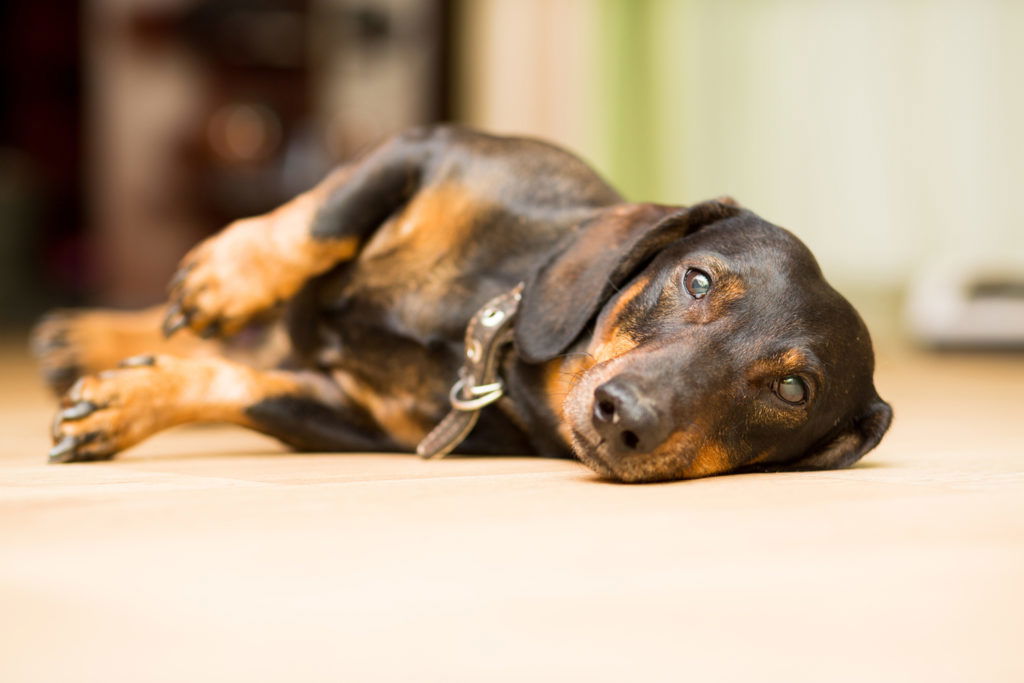
What do I do in an IVDD emergency?
This is what you need to do in a an Intervertebral Disc Disease (IVDD) emergency:
- Restrict movement
- Put your dachshund in a crate
- Carry your dachshund carefully to the Vets
- Ask a friend to help you

Restrict movement
If your dachshund’s has hurt his back, the first thing you must do is restrict his movement by placing him gently into a crate. Then make an emergency appointment with your vet and ask for an immediate referral to a specialist veterinary neurologist.
Put your dachshund in a crate
If you don’t have a crate, put your dachshund in the smallest room in your home or try to hold him still. Be very gentle with him, especially if he’s showing any signs of pain. Call the vet and book an emergency appointment.
Carry your dachshund carefully to the Vets
To get your dachshund to the vet, carry him carefully in his crate. Keep the crate level and try your best not to let it bump around in the car. If you don’t have a crate, carry him in your arms but try to keep his body as still and level as possible.
Ask a friend to help you
You’ll need to ask a friend to help you with driving and opening doors etc. Your vet will then examine your dachshund and advise you on the next steps. Although difficult, try and stay as calm as you can. If you get worked up, your dachshund will pick up on this and also get stressed.
How do I prepare for an IVDD emergency?
With 1 in 4 dachshunds affected by IVDD, you might find it helpful to have an emergency plan in place so you can quickly get up and go. This is how to prepare for an IVDD emergency:
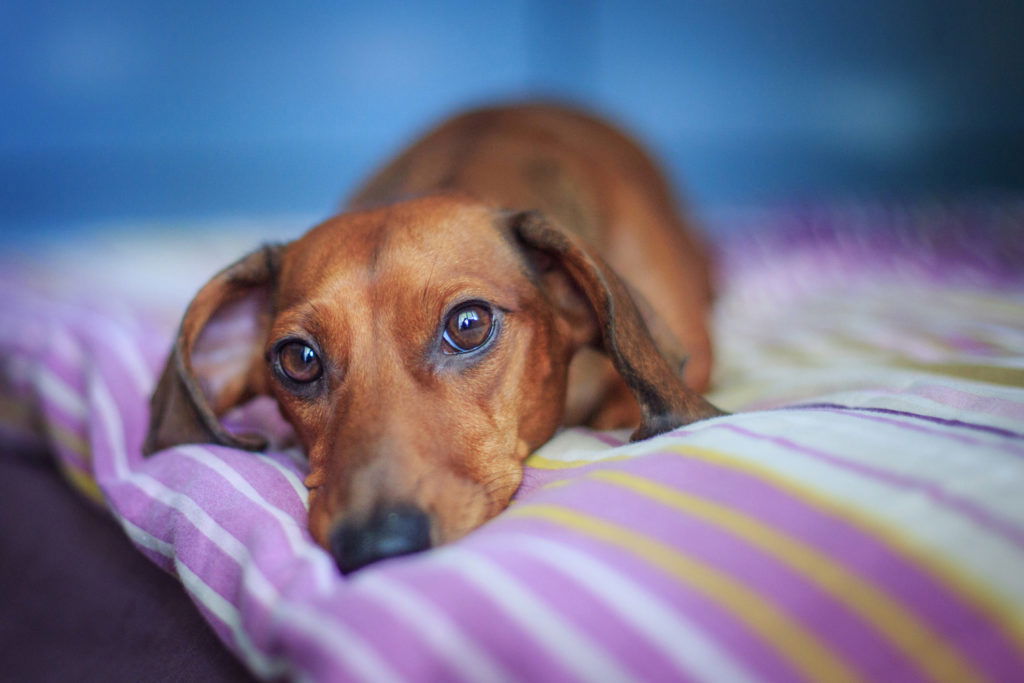
- Make a list of what you’d need to bring with you
- Note down any medications
- Store a dog crate at home
- List some contacts for emergency help
- Check your pet insurance cover
- Note down your pet insurance phone and policy numbers
Make a list of what you’d need to bring with you
If you do need to visit an emergency vet, it can be useful to have a list of items handy that you’d want to take with you. Things like water, dog food and treats, and maybe a dog blanket for warmth – anything that gives your dachshund extra comfort and reassurance.
Note down any medications
Note down any medications your dachshund takes in case it’s relevant for your veterinary neurologist. It may not be something you need, but is definitely worth knowing his meds and having this information to hand.
Store a dog crate at home
The first thing you’d need to do in an emergency is stop your dachshund moving around so much. So store a dog crate in your home in case of IVDD emergencies. Crates are handy for things like potty training too and don’t take up too much room once collapsed down.
List some contacts for emergency help
Make a list of friends or family that could help with your injured dachshund should an IVDD emergency ever happen. You’ll need someone to help carry his crate while you do things like drive and open doors. It’s good to prime a few people upfront so they know what to expect should anything like this ever occur.
Check your pet insurance cover
Check your pet insurance documents to make sure your dachshund is fully covered for any scans or back surgery relating to Intervertebral Disc Disease (IVDD). It’s good to keep your insurance documents to hand in case you need them in an emergency – the last thing you want to be doing in a high-stress situation is searching through drawers and cupboards.
Note down your pet insurance phone and policy numbers
Store your pet insurance phone number and policy number in your phone. This way, if you need to make a quick decision on surgery when you’re with the veterinary neurologist, you’ll be fully informed on what you can agree to. Doing all this and being prepared just takes a bit of stress out of an already stressful situation.
Can dachshunds recover from IVDD?
Yes, many dachshunds make a full or partial recovery from IVDD. Dachshunds with moderate back troubles can often recover with strict crate rest and physiotherapy. For severe cases, there are medical and surgical options that require long-term care at home.
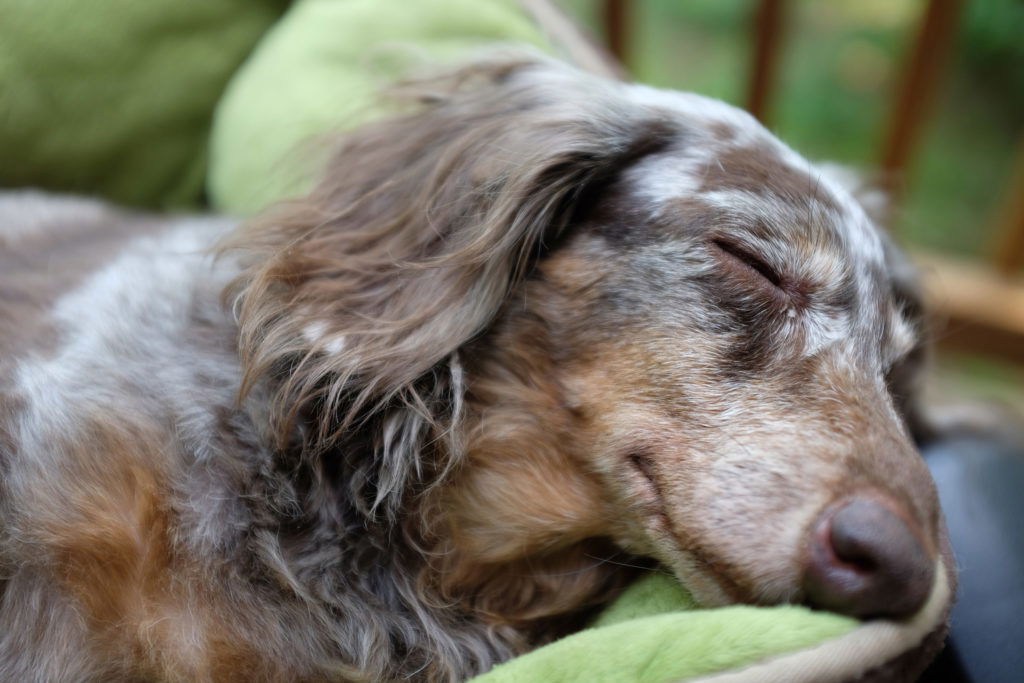
This is what you need to know:
Crate rest
Whether the injury is moderate or severe, part of your dachshund’s treatment will probably be strict crate rest. This means keeping your dachshund confined to a crate for a matter of weeks or more. It’s not fun for him or you, but really is essential for letting your dachshund’s back heal. The key to successful crate rest is making sure your dachshund is crate trained in advance, so he doesn’t freak out and damage his back when you first put him in.
Care for your dachshund
While on crate rest, your dachshund will need much more help with everyday things. You’ll need to put his food and water in his crate, and carefully carry him outside when he needs to go potty. He’ll need lots of care and attention during recovery, and someone will need to be there round the clock to make sure he’s ok.
Stay with the crate
Even if your dachshund is crate trained, he’ll probably get restless or anxious after a couple of days of being cooped up. If you sit beside the crate and comfort him as much as you can, it really will help him feel calmer and more relaxed.
Limit distractions
Keep the environment chilled, without visitors. If your dachshund gets worked up by people coming to the door, put a note on the door and ask people not to knock. The whole point of crate rest is to stop him from moving or jolting suddenly. So limit any distractions to help keep things calm.
Start physiotherapy
In time, you may want to get your dachshund doing some form of physiotherapy. Things like gentle walking, hydrotherapy, massage and so on. You don’t want his muscles to waste away while he’s resting in his crate. So, as soon as you get the green light from the veterinary neurologist, move on to rehabilitation to build up his strength again.
Surgery
For more severe cases, your veterinary neurologist will talk with you about your dachshund’s chances of recovery. They might recommend surgery, depending on the seriousness of the injury and whether they think your dachshund could cope with it. Once your dachshund has had major surgery, you’ll need to nurse him at home. This’ll involve giving him medication (usually pain killers and anti-inflammatories), restricting his movement and maybe doing some gentle massage. Following a careful and committed care routine will boost your dachshund’s chances of recovering properly.
When should I do IVDD surgery?
If your dachshund has a severe case of IVDD and needs surgery, you need to get him to a veterinary neurologist within 24 hours of being injured or paralysed, as the chances of recovery are then higher. Operating early is a huge factor in successful recovery – so act fast!
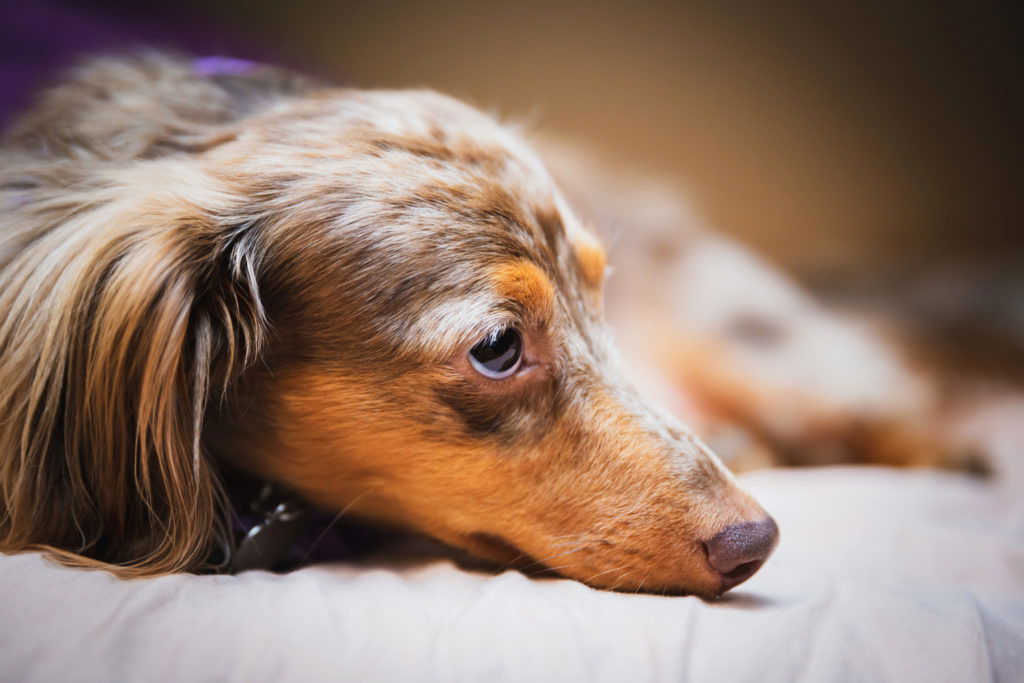
Leaving your dachshund in pain to see how things go is NOT the right thing to do. If you’re unsure what’s wrong with your dachshund, pop to your local vet to get some expert advice. Dachshunds who have surgery beyond the 24-hour mark have a much lower chance of recovery and, sadly, may never walk again.
Can IVDD recur?
Yes, IVDD can recur. Without surgery, there is a very real chance your dachshund will have another episode of IVDD. After surgery, there is the possibility one of the other discs that wasn’t operated on will also sadly deteriorate making it susceptible to bursting.
What do I do if my dachshund is paralysed by IVDD?
In the sad event your dachshund has been paralysed by his back injury, there are still things you can try to give him a happy life. His pain can be managed and you could get a doggy mobility cart / wheelchair so he can still move around.
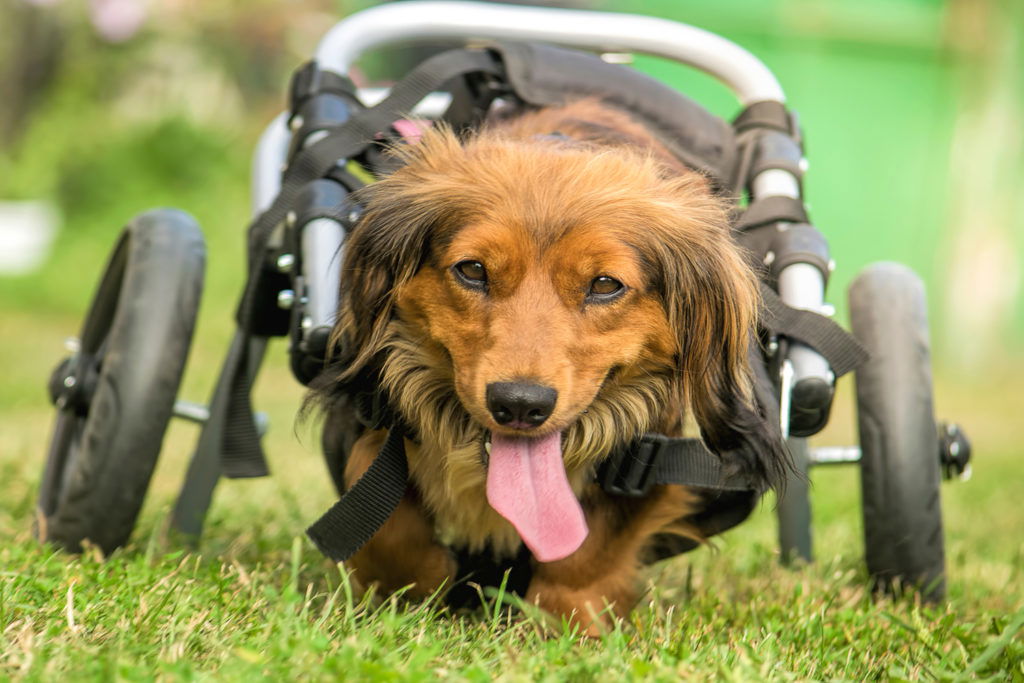
The mobility cart would need to be bespoke made to your dachshund’s measurements. Your veterinary neurologist should be able to help you organise this and can show you (and your dachshund) how to use it properly. You can also post on your local dachshund Facebook group for more advice and support.
A paralysed dachshund may have some ongoing problems that are harder to deal with (bladder issues can be particularly challenging). Every dachshund is different and has very different needs so speak with your veterinary neurologist to get the best advice and care.
What is the cost of IVDD surgery?
Intervertebral disc disease (IVDD) surgery in the US costs on average $3,000, but ranges from $1,500 to $5,000 depending on complexity. You also need to add the cost of scans at $1,000 to $3,000. In the UK, a guide cost of surgery and scans is between £6,000 and £10,000.
If you’re hoping to claim on your pet insurance, check through your policy or give them a call to make sure your covered.
Who should perform IVDD surgery?
The Intervertebral Disc Disease (IVDD) surgery needs to be performed by a veterinary neurologist, not a general veterinarian. If you rush your dachshund to the local vet they should be able to refer you to a specialist and advise you on the next steps.
Can you prevent IVDD in dachshunds?
You can’t prevent IVDD, but you can reduce your dachshund’s risk of getting it through lifestyle choices like feeding him a healthy diet (excess weight puts additional strain on his back), and stopping him from jumping up on things and using the stairs.
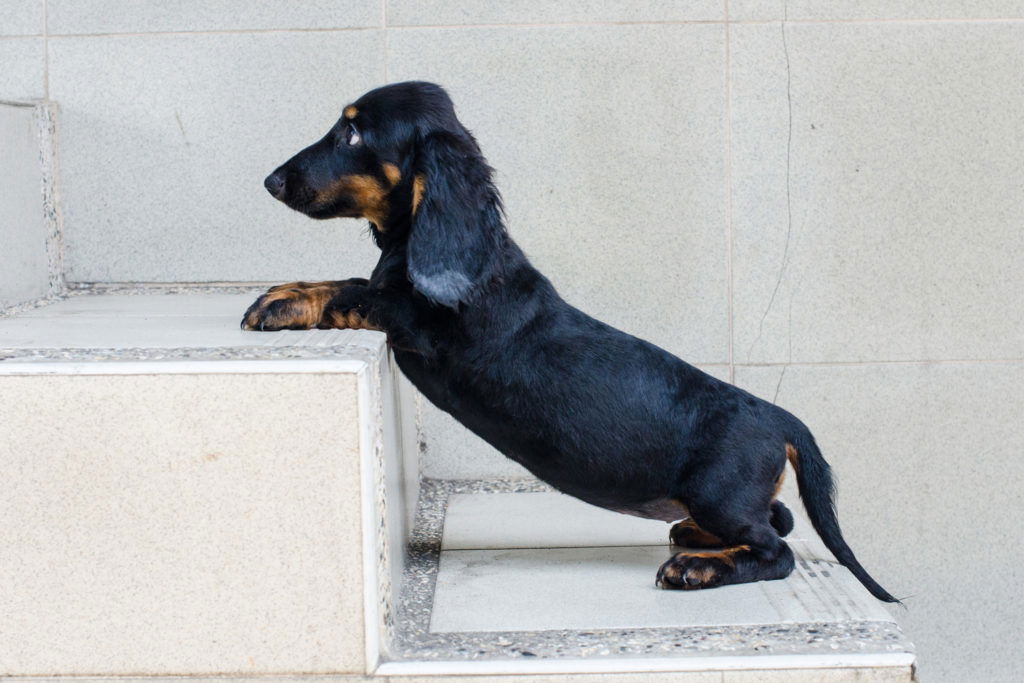
Start as you mean to go on
Don’t be fooled into thinking IVDD won’t happen to puppies or young dogs either. Sadly, it can happen to any dachshund at any age. So start as you mean to go on and stop your dachshund from running up and down stairs, jumping on and off things, or doing any activity that involves sudden stretches or bends to your dachshund’s neck or back.
Get your dachshund into a routine
Getting him into a routine when he’s young will make life so much easier. Keep him on the floor as much as possible by playing with him on his level and put his bed beside your feet. You want him to understand where you want him to lay down, and that the sofa and bed are out of bounds (unless you get a ramp or lift him carefully up and down).
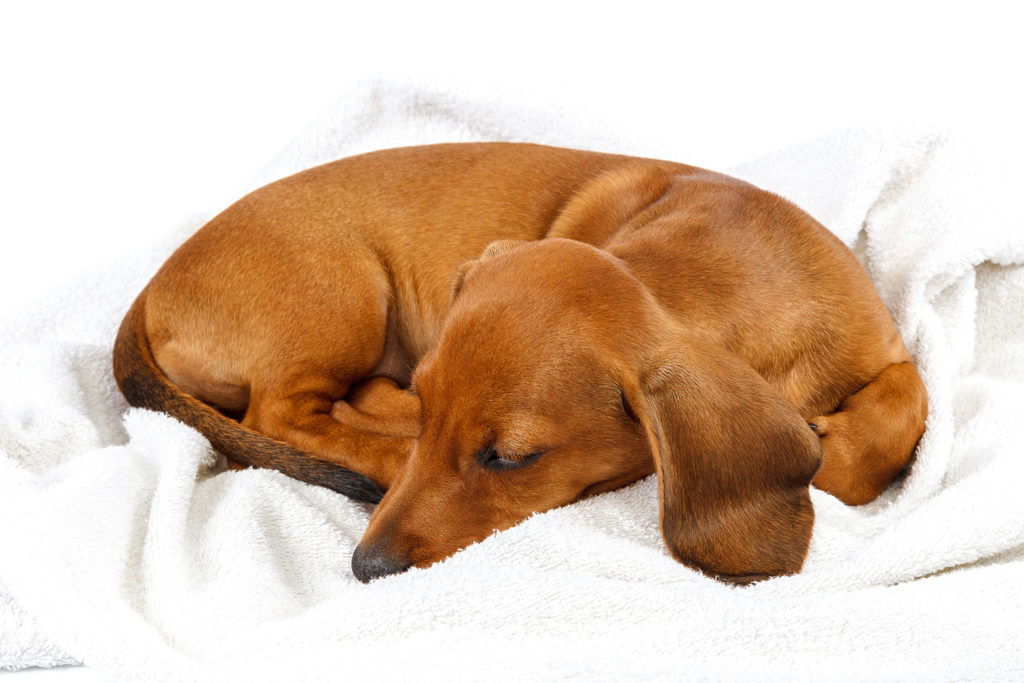
Use baby gates at the top and bottom of any stairs to block them off completely. Carry him up at bedtime so he can sleep on a dog bed nearby. Don’t cave at the sight of those puppy dog eyes either, you have to stick with it and be consistent for this training to work.
If you want him up on the sofa or bed with you, get a ramp and teach him how to use it. Start the ramp at a lower angle and then work up, giving rewards and praise when he does the right thing. That way he can safely get up and down without doing any damage to his already fragile back.
Hold your dachshund the right way
It’s really important you learn how to handle your dachshund correctly too, and make sure everyone in your family knows how to pick him up safely. Don’t let your kids or anyone else pick him up by the front legs – that could seriously injure him. You need to support his back by putting one hand under his chest and the other under his rump. Then lift him gently and evenly to keep his back as level as possible. You’ll need to do this whether you’re bathing him, picking him up for a cuddle, putting him in the car or moving him from A to B.
Keep your dachshund fit and healthy
Exercise for any dog is important, and getting out every day in the fresh air is a must for optimal health. Dachshunds don’t need huge amounts of exercise, miniatures need a minimum of just 30 minutes and standards at least 60 minutes. This can include playtime and walks so don’t think you have to walk for an hour every day unless you want to. You could throw a ball around the garden and let him to do all the work or even play for a bit inside your home. Fit and healthy dachshunds can still get IVDD but, as with us humans, exercise will help to keep them fitter. leaner and healthier overall. Overweight and obese dachshunds could be at more risk of IVDD due to the excess pressure they’re putting on their already fragile backs.
Just do your best
There will be times when your dachshund does jump on or off something and you do have to accept that. You don’t want to spend your whole life in protection mode. Even with precautions, some dachshunds still get IVDD. So just do your best to limit any jolting or jarring movements, and that way you’re doing the very best you can for your little sausage dog.
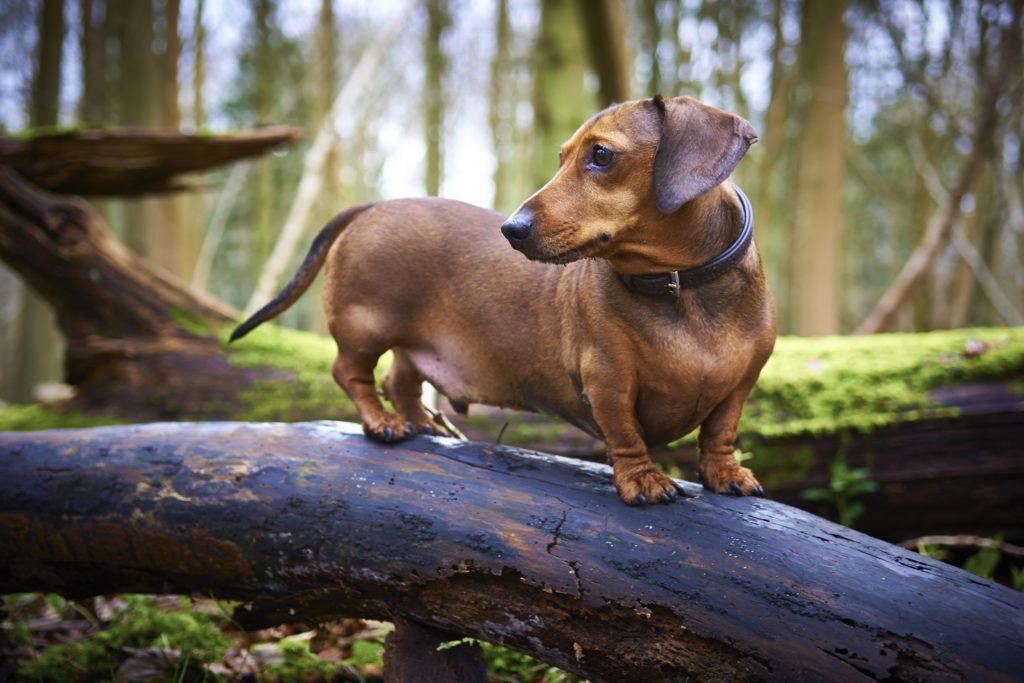
Does neutering a dachshund increase the risk of IVDD?
According to research, neutering a dachshund can increase the risk of IVDD, especially if done before 12-months. Dachshunds neutered before 6 months are said to be 12 times more likely to get IVDD by the time they’re 4, compared with non-neutered dachshunds.
This is something to read up on and speak to your vet about for expert advice. You can also take a look at the dachshund Facebook groups, as they’re full of information about neutering. It’s useful to get advice from other owners who have gone through the same situation too.
So, there you have it. Dachshunds are prone to back injuries and 1 in 4 are at risk of getting IVDD. So be sensible about what you let him do and keep him at a healthy weight. Just by knowing how to spot the signs of back pain and stopping him jumping up and down onto things, you’re doing everything you can to limit his risk of getting back problems. Remember, at the first sign of trouble, restrict your dachshund’s movement and take him straight to the vet for advice. The sooner you speak to a specialist, the higher the chance of recovery!





